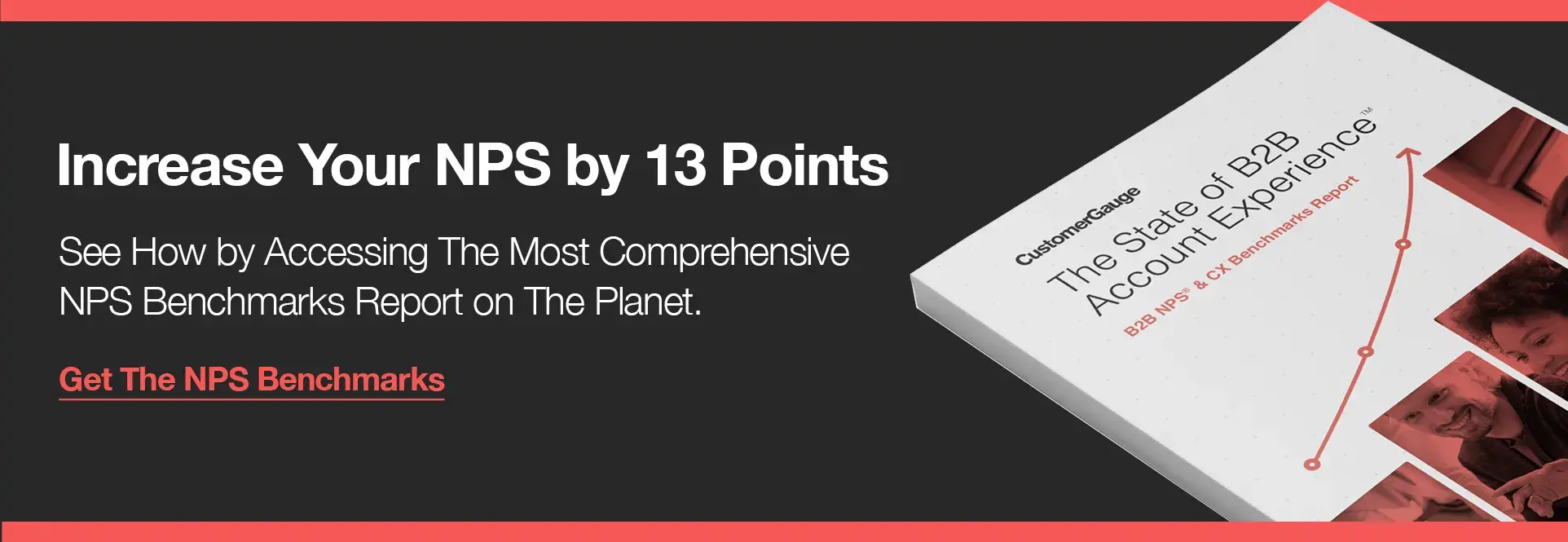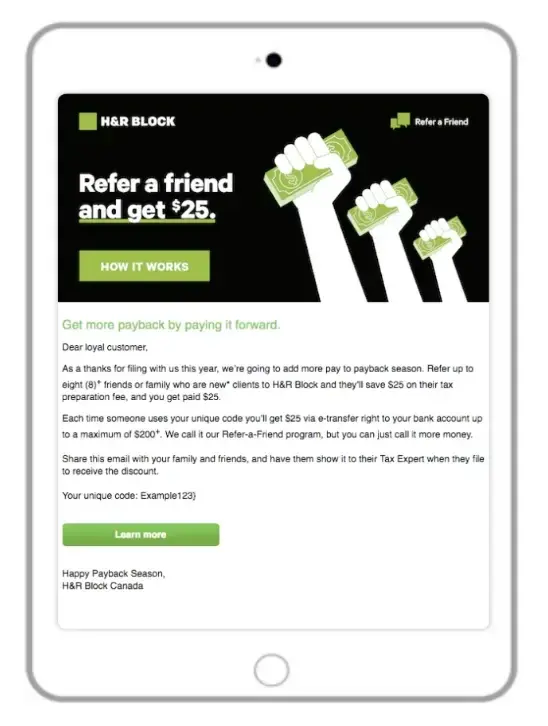When you consider ‘loyalty programs’, B2C strategies such as loyalty points, free gifts, and other customer retention tactics probably come to mind.
However, B2B businesses must also place customer loyalty at the front and center of their marketing models.
Why? Because improved customer loyalty enables you to fight churn, build longer-term relationships, and improve your customers’ lifetime value.
The way to secure these benefits is through a B2B loyalty program.
A program in this space is a customer retention solution designed to establish brand loyalty with the businesses they sell to. B2B loyalty programs differ from B2C ones because have their own unique incentives, processes, and metrics.
In this article, we show you why you should care about B2B loyalty programs and how you can begin to build one that keeps your customers coming back and referring you to their peers.

Why Build a B2B Customer Loyalty Program
Customer loyalty programs can bring serious benefits to B2B brands.
Here’s some reasons why they are so worth your effort:
You’ll build deeper, longer, and more valuable relationships with customers. There is ample evidence to show that loyal customers stay longer and spend more over time. In fact, evidence suggests that customers who are loyal will spend over 300% more with you over their whole lifetime than non-loyal customers.
Loyal customers will refer you to others. Loyal customers don’t only spend more, but they encourage others to spend with you, too. Customer loyalty is one of the fundamentals for a successful B2B referral program.
B2B brands are becoming increasingly intentional about loyalty. Of course, loyalty can just happen by itself. But to fully optimize your loyalty, you need a formal process, i.e. a B2B loyalty program, to support it. Other brands are building them, so by not doing so yourself, you’re at risk of being left behind.
What Makes B2B Loyalty Programs Different?
The loyalty tactics that are familiar in B2C contexts won’t always work in B2B.
To ensure that your B2B loyalty program is as powerful as it should be, you need an approach that’s sensitive to the key differences between B2B and B2C:
B2B loyalty programs are not necessarily for everyone. While B2C companies typically have loyalty campaigns with low barriers to entry (simply sign up and start earning), B2B companies need to be more thoughtful about who they open their campaigns up to.
For example, a B2B company might focus their loyalty program on a select pool of high-value customers, to incentivize higher spend and deeper engagement. The typical B2C points-based system only works for regular repeat transactions — which are rare in B2B.
B2B loyalty programs are typically more tailored to their customers. While a B2C company like Pizza Hut might offer exactly the same loyalty programs to all customers, a B2B loyalty program should focus their attention on the specific pain points of customers.
Those are not the same for every company, however, different decision-makers and users in each customer account may not have the same pain points either. Nurturing individual relationships successfully requires tending to their specific needs.
B2B brands have to reward loyal customers differently. With more complex buying processes, higher-value transactions, and longer relationships, B2B brands can’t rely on incentives that rely on a simple emotional consumer response.
While B2C companies can afford to be more frivolous with the offers they send out, B2B brands need to make the case for the real value of the incentives they offer.
To understand B2B customer loyalty, you’ll need a B2B voice of the customer (VoC) program that can help you navigate the complexity of different customer accounts.
How to Build a B2B Loyalty Program
Now you know a B2B loyalty program is worth your time. So, where should brands start when building one?
1. Begin by Measuring Your Current Loyalty Rates
To understand who could be eligible for your B2B loyalty program, you’ll need two sets of data on your customers: who are the most satisfied and loyal? And who is worth most to your brand?
You can gauge the answer to the first question with Net Promoter Score (NPS), a customer surveying system designed to help you identify your most loyal customers. It works by asking customers how likely they are to recommend your brand to a friend or colleague and divides them into three categories depending on their response.
Your promoters are those customers that are most loyal, enthusiastic, and likely to refer. It’s these that your loyalty program should target.
Many B2B brands only offer their loyalty schemes to their highest-value customers.
By overlaying NPS results with metrics such as customer lifetime value (CLV), you’ll get a much more accurate sense of how loyal your customers are.
2. Decide Your Incentives and Rewards
How will you reward your loyal customers? And what will you reward them for doing?
This takes us to the heart of your B2B customer loyalty program.
What incentives will you offer? Different loyalty programs work in different ways, depending on your product, customer relationships and touchpoints, and pricing structure. Your incentives will have to make sense for you.
For example, you could offer perks such as access to exclusive content and educational materials. Alternatively, discounts on future purchases can work well.
What do you want from your customers in return? B2B loyalty programs are often used together with referral programs, for example, so you can reward loyal customers when they recommend you to others.
Alternatively, you can reward your customers for engaging on social media or in customer surveys, or for participating in your conferences.
Of course, part of this step will be to let your customers know what they stand to gain by enrolling in the loyalty program.
A ‘mystery’ prize might work well with B2C customers, but B2B customers want to be sure they’re making wise investments.

3. Be Clear on the Practicalities
Even if you have the best CX in the world, customers churn, accounts go inactive, or loyalty points go unredeemed.
To ensure that your loyalty program goes smoothly later on, be clear on all the details to prevent any customer dissatisfaction.
Have a plan for expiration dates and inactive accounts. Clearly state to customers when their loyalty offers will become inactive. At what point will a customer’s account be considered ‘inactive’ and removed from the loyalty program?
Define your conditions before launching the loyalty program. A vague loyalty program that results in disputes with your customer is a recipe for lower retention rates. Make sure you clearly define your terms and conditions before offering the program to your customers.
For example, are you offering special features to customers that spend a particular amount of extra money on your business? Clearly describe the amount they need to spend, and on what features it must be spent.
4. Measure Your Performance
Finally, you need to manage and measure the data from your loyalty program —you should never launch a B2B loyalty program without a plan to measure its effectiveness!
As we shared in our article on customer loyalty analysis, research has shown that some customer loyalty programs actually lose their business money.
How? Because they offer so many perks and incentives to customers that they don’t make a return on their investment.
That means that to understand the success of your customer loyalty program, you need to evaluate it effectively by measuring:
Earnings through your loyalty scheme. How much revenue can be traced back to your loyalty program
It’s impact on churn. Has your program had an impact on retention?
Referrals. You could use your customer loyalty program to generate referrals from your customers. You will want to know just how many are being brought in (and by whom)
ROI. Loyalty programs don’t come for free. But by measuring your ROI, you’ll understand if it’s delivering for your bottom line
We found that 70% of B2B brands aren’t linking their customer experience program to their financial data. For your B2B customer loyalty program to be successful, it’s a must.
B2B Loyalty Program Examples
Which companies have built loyalty programs worth knowing?
Here, we share 4 B2B loyalty program case studies that we’ve been impressed by:
IBM
One of the most widely-appreciated B2B loyalty programs is IBM’s VIP Rewards program. It shows that a B2B loyalty program case study doesn’t need to be boring!
IBM sets its customers a range of challenges they can complete to accumulate rewards points. These include tasks that help IBM to boost its community, such as interacting in the forum, or tasks that help the customer such as learning a piece of IBM technology.
IBM customers love taking part in this loyalty program because they get to spend their points on great rewards such as private sessions with IBM experts.
Lenovo
Lenovo’s Lenovo Expert Achievers Program (LEAP) was created as a game-changing loyalty program that worked on multiple levels. It features ‘Learn & Earn’, which rewards partners with points for participating in educational courses online.
‘Earn & Sell’ also tracks the performances of their partners, rewarding them with points proportional to their sales. These points can be exchanged for cash, meaning that partners are always interested in earning them.
Lenovo’s business partners sold 7x more products to customers after joining the loyalty program than they did in the year beforehand.
How Can CustomerGauge’s Account Experience Help Build B2B Loyalty Programs?
Easily guide your next B2B loyalty program with CustomerGauge’s Account Experience.
Our automated software analyzes the behavior of your customers to indicate potential churn threats, as well as accounts that seem to love your service. You can then drill down and discover all about your happiest customers, learning exactly what more they want from you.
Using NPS, as well as other engagement metrics, CustomerGauge can give you daily account feedback automatically. We’re relied upon by hundreds of B2B brands to increase retention and help boost revenue.
For example, using voice of the customer solutions powered by CustomerGauge, you can discover more about the transactional habits of your customers. These can help to guide the creation of loyalty programs based on rewarding the type of transactions that you see occur the most.
VoC is only one piece of the CustomerGauge puzzle.
When you work with CustomerGauge’s Account Experience solution, you’re working with several tools and solutions which synchronize to produce actionable insights for your next loyalty program beyond.

